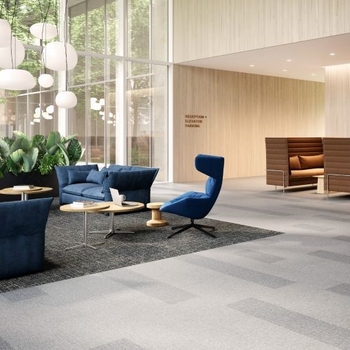In the race toward sustainability, materials like low-carbon concrete, recycled components, and noise-reducing flooring have become staples in green building projects. However, these innovations often come with unique challenges that require thoughtful solutions to ensure their effectiveness and durability. Here’s a closer look at these materials and how to navigate their complexities.
1. Low-Embodied Carbon Concrete: Balancing Innovation and Practicality
Low-embodied carbon concrete (Type 1L), such as Portland Limestone Cement (PLC) or blends incorporating supplementary cementitious materials (SCMs) like fly ash or slag, significantly reduces embodied carbon. However, these mixes can introduce issues such as weaker chemical bonds or challenges with burnished finishes. For instance, reducing limestone content and adding pozzolans, while eco-friendly, may require adjustments in project budgeting and application techniques to maintain quality and performance.
Expert solution: Adjusting installation techniques and partnering with manufacturers and flooring dealers who provide specific guidance on handling low-carbon mixes can mitigate potential pitfalls.

2. Recycled Materials: Balancing Supply and Demand
Recycled materials, such as reclaimed wood, metal, or even carpet, play a vital role in sustainability. However, fluctuations in availability, varying quality, and compatibility with other materials can pose challenges for design teams.
Additionally, there is a growing push for PVC-free materials in luxury vinyl tile (LVT) and sheet vinyl. While these alternatives eliminate concerns about PVC’s environmental impact, they lack a long-term installation history, making their durability and performance harder to predict. These materials can also cost 10–30% more than traditional options. On the other hand, PVC remains an incredibly stable material, making it a reliable, tested choice for many projects.
Expert solution: Developing supplier partnerships ensures a steady, high-quality supply. Early collaboration between design and construction teams helps address potential integration issues. Clear communication about product certifications and warranties also helps streamline project outcomes.
3. Noise-Reducing Flooring: Combining Acoustics and Eco-Friendliness
Modern noise-reducing flooring, often crafted with recycled materials, is an asset in creating comfortable, quiet spaces. However, ensuring that these products meet both acoustic and environmental standards requires diligence. Certifications such as Cradle to Cradle, GreenGuard, or Red List-compliant options can guide environmentally responsible choices while maintaining performance standards.
Expert solution: Test flooring solutions in the project environment to confirm their acoustic performance. Seek out products with third-party certifications to ensure they meet both sustainable and performance criteria.
Do Your Homework: Avoiding Greenwashing
As sustainability becomes a selling point, greenwashing is a growing concern. Only a handful of manufacturers truly embrace cradle-to-cradle principles, offering remanufactured products that they will take back at the end of their lifecycle. Conducting thorough research and verifying manufacturers’ claims are essential steps to ensure your project achieves genuine environmental benefits.

